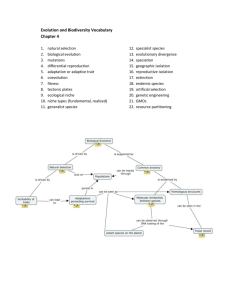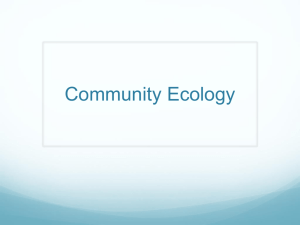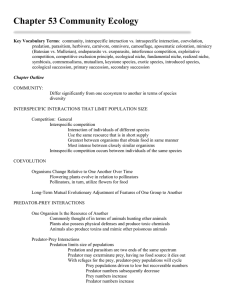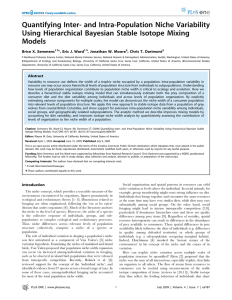Student Handout Community Ecology
advertisement
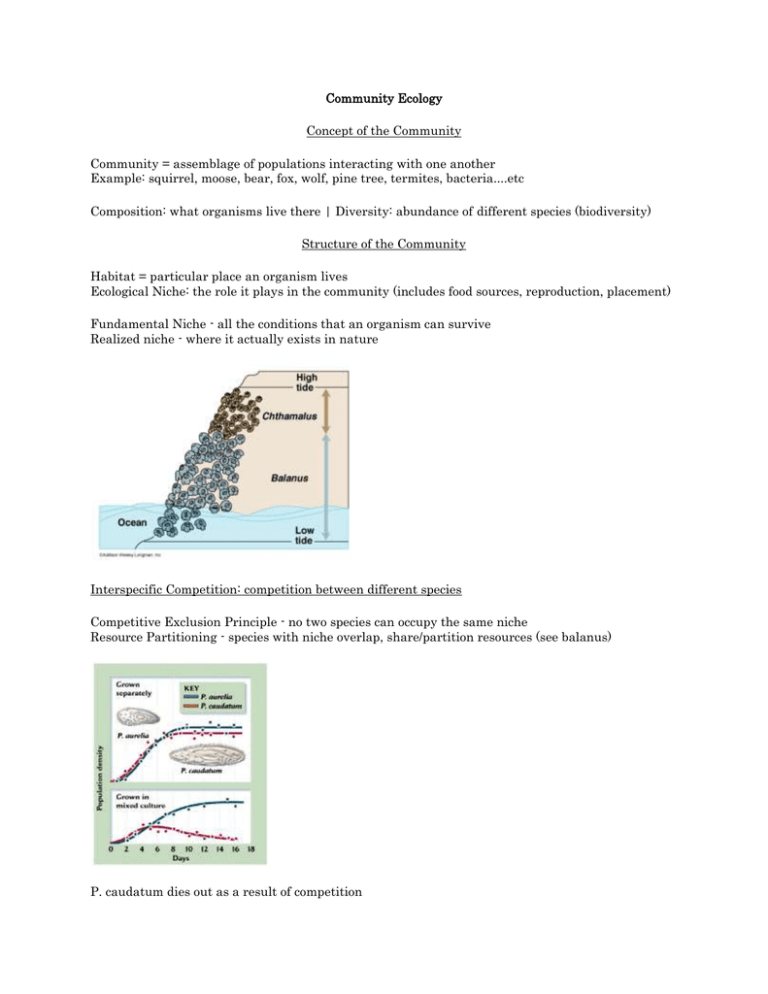
Community Ecology Concept of the Community Community = assemblage of populations interacting with one another Example: squirrel, moose, bear, fox, wolf, pine tree, termites, bacteria....etc Composition: what organisms live there | Diversity: abundance of different species (biodiversity) Structure of the Community Habitat = particular place an organism lives Ecological Niche: the role it plays in the community (includes food sources, reproduction, placement) Fundamental Niche - all the conditions that an organism can survive Realized niche - where it actually exists in nature Interspecific Competition: competition between different species Competitive Exclusion Principle - no two species can occupy the same niche Resource Partitioning - species with niche overlap, share/partition resources (see balanus) P. caudatum dies out as a result of competition Generalist - eat different things, live in a variety of spaces (raccoon) | Specialist - very specific needs (panda) Predator-Prey Interactions (You can see an obvious cycle, prey numbers go up followed by predator numbers going up, then prey drops, predators drop) Prey Defenses Camouflage (cryptic coloration) - blending in Mimicry - one species resembles another as a defense (milk snake) Herding Behavior (zebra) Startle Behavior (blowfish) Anatomical defense (porcupine) Chemical defense (skunk) Which of these snakes is venoumous? Symbiotic Relationships Symbiosis - intimate relationship between two or mroe species Parasitism - one individual is harmed, the other benefits (ticks & deer) Mutualism - both benefit (flowers & honeybees) Commensalims - one benefits, other is neither harmed or benefited (clown fish & sea anemone) Community Development Ecological Succession - involves a series of species replacements Primary Succession - occurs where there is no soil formation (volcanic island) Secondary Succession - occurs after an area is disturbed (prairie fire) Pioneer Species - first species to inhabit an area Climax Community - when the species replacement slows and the ecosystem stabilizes Community Biodiversity Intermediate Disturbance Hypothesis - moderate disturbances in an ecosystem are necessary to maintain biodiversity Keystone Species - needed to maintain biodiversity (often top predators) Ex: Kelp, Sea otters, Sea urchins, Abalone - what happens when you remove the otters Exotic Species - a species introduced into a habitat, often causes major disturbance and even extinction of native species Ex: Kudzu, Snakehead catfish, Pirahna, Mussels




